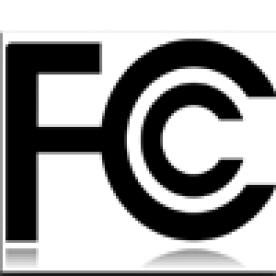With the expansion of “over-the-top” (OTT) video programming options such as Netflix, Amazon Prime, Roku and Apple TV, the Federal Communications Commission (FCC) is taking a fresh look at its definition of a multi-channel video programming distributor (MVPD). In the past, it was easy to identify an MVPD. With limited exceptions, it was either a cable or satellite service provider.
However, with the wide-scale accessibility of broadband networks, video capable-devices, video programming distributors and facility-based IP networks, there are now many options for “broadcasting” video programming. The FCC’s Notice of Proposed Rulemaking (NPRM) seeks comment on whether any new or emerging video programming providers should be defined as an MVPD and, if so, what rights and obligations currently imposed on MVPDs should be extended to these new services and their providers.
The first task for the FCC is to determine which services fit within the statutory definition of an MVPD. The FCC has proposed two alternative approaches for defining “new” MVPDs: (1) those that provide multiple linear programming streams; or (2) those that provide multiple linear programming channels and also own the transmission paths. Up until now, the FCC has defined an MVPD as a video programming distributor that also owns the transmission path on which it provides service.
Under the “linear programming” approach, any video programming service provider that provides multiple streams of pre-scheduled programming potentially could be defined as an MVPD. Exempt from this definition would be “on-demand” video programming available from such outlets as Netflix or Hulu. The FCC also is seeking comment on possible limitations to the definition, which would exclude providers that only provide content they own (for example, MLB.TV). Alternatively, if the additional requirement of ownership of the transmission paths is adopted, most over-the-top service providers would not be defined as an MVPD, since their services run on broadband networks owned by other providers. For this reason, the FCC has tentatively concluded that the more-inclusive “linear programming” definition is the appropriate approach, but seeks comment on that conclusion.
In addition, the FCC is seeking comment on how the newly-acquired status of being an MVPD would affect the video programming services. An MVPD has both obligations and rights when it comes to providing video programming. For example, an MVPD is entitled to enter into good faith negotiations to negotiate retransmission consent agreements with broadcast stations. Further, the FCC’s program access rules require MVPD-affiliated programmers to make their programming available to other MVPDs on a non-discriminatory basis.
There also are a host of obligations that are imposed on MVPDs, including Equal Employment Opportunity requirements, closed captioning and video description requirements, Emergency Alert System obligations, and rules dealing with the competitive availability of navigation devices. The NPRM requests comments on whether, if IP-based video programmers are redefined as MVPDs, certain current rules should not be applicable. In addition, the FCC seeks comment on whether a new category of MVPDs would cause uncertainty for existing MVPDs that have entered into programming contracts whose value may be reduced if the program access rules apply to the expanded universe.
Other issues may arise with respect to expansion of the MVPD definition. For example, the current copyright statutory license permits MVPDs to retransmit broadcast performances if the MVPD pays a statutory fee. The FCC seeks comment on whether an expanded universe of MVPDs would create conflicts with the existing copyright law. Following from this is the concern that content owners have typically withheld the right to distribute their content on the Internet when licensing it to cable networks or broadcast stations. If the FCC expands the MVPD definition, current video programming networks carried on MVPD systems may be constrained in their legal ability to distribute their programming over the Internet if they are reclassified as MVPDs.
Finally, the FCC is asking for comment on the best approach to deal with legacy MVPDs that transition to IP-based distribution networks and how to regulate separate OTT services that these MVPDs may begin to offer. The FCC tentatively concludes that a cable system migrating to an IP-based distribution method would still be treated as a cable operator under the proposed rules. On the other hand, if the operator begins to offer separate OTT services over the Internet, then that class of service would be classified as a non-cable MVPD under the proposed linear programming approach. As noted above, the FCC is seeking comment on the appropriate regulatory structure for linear programming MVPDs.
A large-scale expansion of the definition of an MVPD would likely cause a major disruption in the video programming industry. Up until now, the FCC rules clearly defined the industry, with cable and satellite on one side and everyone else on the other side. The FCC believes the proposed rules would ensure that existing MVPDs will maintain their rights and obligations as they transition to an IP-based distribution method, while new outlets of video programming networks will gain the regulatory tools to compete with incumbents.
However, Commissioners Pai and O’Reilly, in separate statements, raised the question whether the proposed new regulations are necessary in light of the dynamic nature of the industry, and whether the new regulations would restrict or redirect future growth in the industry.
Comments on the NPRM are due by February 17, 2015, and reply comments are due by March 2, 2015.




 i
i

